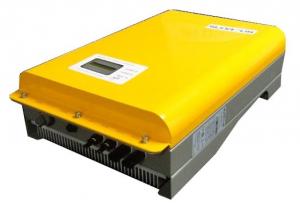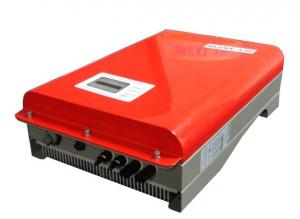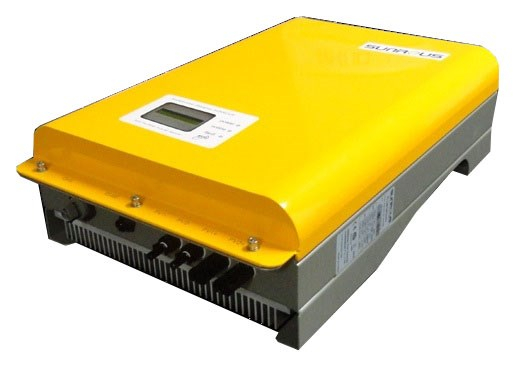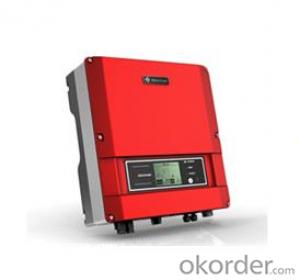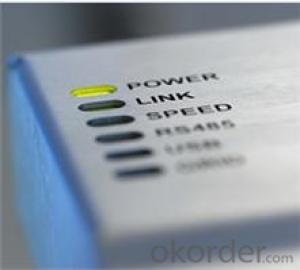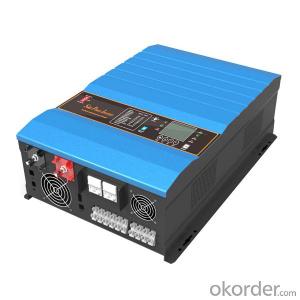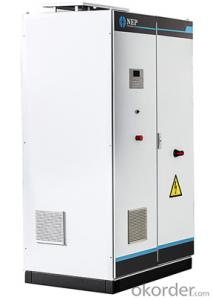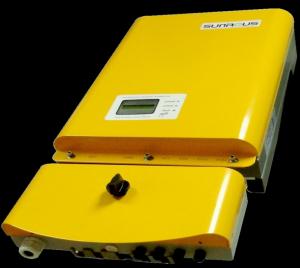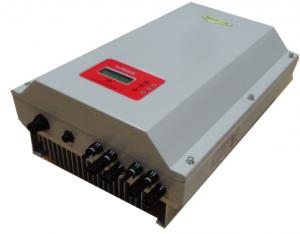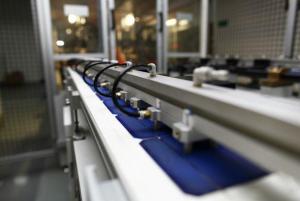Eastman Solar Inverter - US Standard PV Grid-Tied Inverter Solar Inverter
- Loading Port:
- Shanghai
- Payment Terms:
- TT or LC
- Min Order Qty:
- 10 cm
- Supply Capability:
- 800 cm/month
OKorder Service Pledge
OKorder Financial Service
You Might Also Like
CNBM International is highly recognized by its business partners and clients all over the world and has obtained rapid development under the spirit of win-win. We will carry on the mutual beneficial, innovative and revolutionary trading structure as we did before, create value for our employees, share holders and clients and benefit the whole society in our future development.
US Standard PV Grid-Tied Inverter Solar Inverter
5 years warranty
·Sealing stainless steel shell, suitable for indoor or outdoor installation
·Using industrial frequency transformer in isolation,ensure system safety and reliability
·The highest efficiency achieves 94. 8% have satisfactory cosmetic
·Adopt connectors type cable connection, easy operation and installation
·With multiple independent MPPT channel function to ensure maximum photovoltaic system
capacity
·Has the active and passive double prevent island function
·Working temperature range - 25 to 50 ℃
LF series 0.6kw — 1.5kw
Features: Single stage inverter is the main characteristic of this product , in which power grade period compared with other topological structure has higher conversion effciency and reliability

LF series 2.0kw — 2.8kw
Features: Double channel input, and their respective independent of the MPPT function, make photovoltaic array installation is more fexible.

Solar Inverter Datasheet
| GT0.6-ZX-01/LF | GT1.0-ZX-01/LF | GT1.5-ZX-01/LF | |
|---|---|---|---|
| Input(DC) | |||
| Max.DC Power | 700W | 1200W | 1750W |
| Rated input voltage | 280V | 280V | 280V |
| PV Voltage range, MPP | 150V ~ 400V | 150V ~ 400V | 150V ~ 400V |
| Max.DC Voltage | 4.5A | 6.0A | 10.0A |
| Number of MPP trackers | 1 | 1 | 1 |
| Number of strings (parallel) | 1 | 1 | 1 |
| Output(AC) | |||
| Nominal AC /max AC power | 600W/660W | 1000W / 1100W | 1500W / 1650W |
| Max.output current | 3.0A | 5.0A | 7.0A |
| Nominal AC Voltage | 120V/220/ 230/240V | 120V/220/ 230/240V | 120V/220/ 230/240V |
| AC range | -15+10%(Vrms) adjustable | -15+10%(Vrms) adjustable | -15+10%(Vrms) adjustable |
| AC grid frequency/range | 50/60/±0.5Hz adjustable | 50/60/±0.5Hz adjustable | 50/60/±0.5Hz adjustable |
| Power factor | >0.99 | >0.99 | >0.99 |
| THD | <4% | <4% | <4% |
| AC connection | Single-phase | Single-phase | Single-phase |
| effciency | |||
| Max.effciency/Euro-ETA | >93.0% / >92.0% | >93.5% / >92.5% | >94.5% / >93.0% |
| Protection devices | √ | √ | √ |
| DC reverse polarity protection | √ | √ | √ |
| AC short-circuit protection | √ | √ | √ |
| Ground fault monitoring | √ | √ | √ |
| Grid monitoring | √ | √ | √ |
| Output Transient Voltage Suppression | √ | √ | √ |
| General data | |||
| Dimensions (W/ H / D) in mm | 330 / 330 / 146 mm | 330 / 430 / 146 mm | 330 / 430 / 146 mm |
| Weight (Kg) | 19.5 | 22.5 | 27 |
| Operating temperature range | -25 ~ +50 | -25 ~ +50 | -25 ~ +50 |
| Storage temperature range | -40 ~ +70 | -40 ~ +70 | -40 ~ +70 |
| Ambient humidity | 0 ~ 95% | 0 ~ 95% | 0 ~ 95% |
| Consumption (night) | <0.5W | <0.5W | <0.5W |
| Topology | HF-transformer | HF-transformer | HF-transformer |
| Cooling concept | Convection | Convection | Convection |
| Enclosure type | IP65 | IP65 | IP65 |
| Features | |||
| DC connection: PV special connector | √ | √ | √ |
| AC connection: connector | √ | √ | √ |
| LCD display & Backlit | √ | √ | √ |
| LED display | √ | √ | √ |
| Interfaces: RS485 | √ | √ | √ |
| Warranty: 10years | √ | √ | √ |
| Certifcates & approvals | UL1741/ IEEE1547/ VDE0126-1-1/ AS4777/ DK5940 | UL1741/ IEEE1547/ VDE0126-1-1/ AS4777/ DK5940 | UL1741/ IEEE1547/ VDE0126-1-1/ AS4777/ DK5940 |
| Electromagnetic compatibility | IEC62103/ EN50178/ EN61000-6-1/2/3 | IEC62103/ EN50178/ EN61000-6-1/2/3 | IEC62103/ EN50178/ EN61000-6-1/2/3 |
- Q: Can a solar inverter be used with solar trackers?
- Yes, a solar inverter can be used with solar trackers. Solar trackers are used to maximize the efficiency of solar panels by orienting them towards the sun. Solar inverters are responsible for converting the DC power generated by solar panels into usable AC power. Both components work together to optimize solar energy production.
- Q: What are the indicators of a faulty solar inverter?
- Some indicators of a faulty solar inverter may include a complete loss of power generation from the solar panels, flickering or inconsistent power output, unusual noises coming from the inverter, error messages or warning lights displayed on the inverter's screen, and a noticeable decrease in the overall efficiency of the solar system.
- Q: What are the potential risks of overloading a solar inverter?
- Overloading a solar inverter can lead to several potential risks. Firstly, it can cause the inverter to overheat, which can result in damage to the internal components and reduce its lifespan. Secondly, overloading can cause the inverter to shut down or trip, interrupting the solar power generation and potentially causing a power outage. Additionally, overloading the inverter may also compromise the safety of the electrical system, increasing the risk of electrical fires or other hazards. Therefore, it is important to ensure that the solar inverter is properly sized and not overloaded to avoid these potential risks.
- Q: What is the role of a display or user interface in a solar inverter?
- The role of a display or user interface in a solar inverter is to provide a means for users to monitor and interact with the inverter's functionalities and data. It allows users to view real-time information about the solar power generation, system status, and any potential issues or errors. Furthermore, the user interface enables users to adjust settings, configure preferences, and troubleshoot problems if needed. Overall, the display or user interface enhances the usability and control of the solar inverter for users.
- Q: Can a solar inverter be used with dual-axis solar trackers?
- Yes, a solar inverter can be used with dual-axis solar trackers. The dual-axis solar trackers continuously adjust the position of the solar panels to optimize sun exposure throughout the day. The solar inverter is responsible for converting the DC power generated by the solar panels into AC power for use in residential or commercial applications. Therefore, the solar inverter can be easily integrated with dual-axis solar trackers to ensure efficient power generation and utilization.
- Q: Are solar inverters compatible with different solar panel technologies?
- Yes, solar inverters are generally compatible with different solar panel technologies. Most modern solar inverters are designed to work with a wide range of solar panel technologies, including monocrystalline, polycrystalline, and thin-film panels. However, it is always recommended to check the specifications and compatibility of the specific inverter with the desired solar panel technology before making a purchase.
- Q: How does a solar inverter protect against short circuits?
- A solar inverter protects against short circuits by monitoring the electrical current flow and detecting any abnormal increase in current caused by a short circuit. Once a short circuit is detected, the inverter immediately shuts down the power output to prevent any damage to the solar panels, the inverter itself, or the electrical system.
- Q: What is the role of a solar inverter in a grid-tied system?
- The role of a solar inverter in a grid-tied system is to convert the direct current (DC) electricity generated by the solar panels into alternating current (AC) electricity that can be used to power electrical appliances and be fed back into the utility grid. It also ensures the synchronization of the solar system with the grid and regulates the voltage and frequency of the electricity being produced.
- Q: What are the common issues and troubleshooting steps for a solar inverter?
- Some common issues with solar inverters include no power output, low power output, display or communication errors, and overheating. Troubleshooting steps for these issues may involve checking the input voltage and connections, inspecting the DC and AC cables for damage, resetting the inverter, updating firmware or software, ensuring proper ventilation and cooling, and contacting technical support if necessary.
- Q: What is the role of a solar inverter in a solar-powered electric fence?
- The role of a solar inverter in a solar-powered electric fence is to convert the direct current (DC) generated by the solar panels into alternating current (AC) that is used to power the electric fence system. The inverter ensures that the energy captured by the solar panels is transformed into a usable form for the electric fence, allowing it to function efficiently.
Send your message to us
Eastman Solar Inverter - US Standard PV Grid-Tied Inverter Solar Inverter
- Loading Port:
- Shanghai
- Payment Terms:
- TT or LC
- Min Order Qty:
- 10 cm
- Supply Capability:
- 800 cm/month
OKorder Service Pledge
OKorder Financial Service
Similar products
Hot products
Hot Searches
Related keywords
